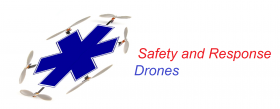Helicopters, not drones, are being used for search and rescue efforts in the Philippines. Photo: U.S. 7th Fleet
Drones are the future of search and rescue efforts, so why the heck aren’t they flying over Tacloban right now, looking for some of the 25,000 people who remain missing?
Right now, Reuters is reporting that American aide helicopters have begun search and rescue efforts in Tacloban, where at least 4,000 people are dead. But so far, there have been no reports of drones—military or otherwise—joining that search.
One of the rallying cries of those who support the commercial integration of unmanned aerial vehicles into American skies is that they can help perform search and rescue operations cheaper and more efficiently than helicopters can. Drones can fly lower, can be equipped with the same infrared and thermal imaging sensors, and, with their lower cost, a team of drones can cover more area than a helicopter can.
If drones are ever going to make the public relations transformation from killing machine to commercial-and-public-service juggernaut that those in the industry are hoping they will, they’ve got to be deployed sometime. In the United States, the FBI has used drones in several hostage situations, and some search and rescue teams and even hobbyists are considering using them for search and rescue efforts. Back in August, a Monmouth University poll showed that 88 percent of Americans support their use as a search and rescue platform. Federal Aviation Administration regulations prevent their use in the United States by most entities, but teams operating in the storm-battered Philippines could likely use their help right now.
Part of the reason why drones haven’t been used in the aftermath of the typhoon may come back to an August announcement by the US military that it would only deploy drones for humanitarian efforts in the Philippines at the country’s request. But that same article suggests that the military has already been using drones there to create topographical maps and provide “safety estimates.” By now, you’d have to think that the country would take any help it can get.
“UAS have the potential to help in search and rescue missions by covering more ground and keep police officers safe by providing an eye in the sky in dangerous situations,” Michael Toscano, CEO of the Association for Unmanned Vehicle Systems International, said in a statement following the Monmouth University poll. “They do all of this at a fraction of the cost of manned aircraft, helping to save time, save money and, most importantly, save lives.”
All of the benefits Toscano is touting are very theoretical until someone actually proves it.
Lauren Orsini over at ReadWrite has an excellent story about how drones could be used to help the Tacloban disaster relief effort. Drone proponents have plugged them as being useful for setting up on-the-fly wireless networks, delivering vaccines, and finding missing people. The Philippines could use all of that right now. Orsini quotes Nelson Paez, CEO of DreamHammer, a government contractor that sells drone piloting systems to the government, as saying that there are no drones available to help out in the effort. He blames slow FAA rule making and the lack of a legal commercial market in the United States for the lack of drones over the Philippines right now.
Part of that may be true. But we’re (humans) are using drones to map Incan sites in Peru,measure elephant populations in Africa, and track possums in New Zealand. There are thousands of drone hobbyists who have quadrotor helicopters that can fly for 15 minutes at a time over city blocks. There’s a freaking US Air Force base with several Global Hawks in Guam, 1,000 miles away, with a known propensity to fly over the Philippines. It’s time for Toscano, or someone else in an industry desperately seeking a PR win to make something happen.
Paez may be half right when he tells Orsini that “if there was a commercial market for drones, they’d be available right now. You could just pick up 50 to 100 at Best Buy and put them out there.” But he knows that companies aren’t sitting back and waiting for the FAA to flick a magic switch for them to begin developing drones. They exist and they’re out there. They’re being tested in private spaces, by hobbyists all over the United States, by companies in other countries. They’re ready to be flown, and they should be ready to help.







